Heg park museum
Introduction
Text-to-speech Audio
Norwegian-Wisconsinites Nels Bergan, John N. Johnson, John Rood and others started the Heg Park Commission, which raised money in the community to create what became the first public park in Racine County. Bergan was also the dynamo behind the creation of Racine’s Memorial Hall and co-founder of the Racine County Historical Society.
Nils Bergan, who came to Racine County from Norway in 1906, spearheaded the construction of Racine’s Memorial Hall. Bergan led the effort to create Heg Memorial Park, although in a 1957 interview he credited Ella Stratton Corbo as the guiding force behind the park’s establishment. According to his obituary, he paid the downpayment for the eleven acres of land out of his own pocket to the Jacobson family, which sold the land to the Heg Park Commission for just a third of its value.
Images
Entrance to Heg Park. The Wisconsin Historical Marker and entrance to Norway cemetery is on the east side of the Heg Park Road.

A docent stands ready to explain how early settlers lived in the restored 1837 log cabin. The Heg Park museum is to the left.
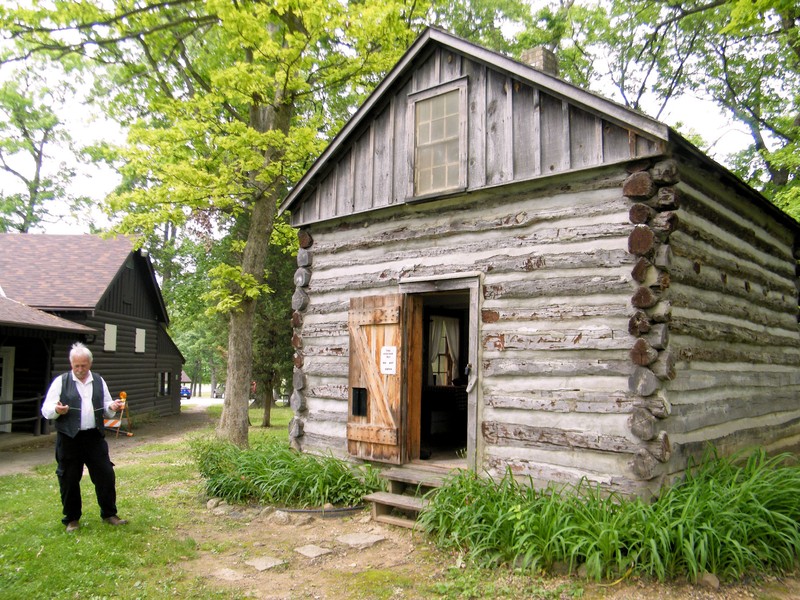
Interior of the 1837 log cabin. At first, the cabin would have had an open-hearth stove. Once the family became more established, they could afford a wood stove for cooking and heating.
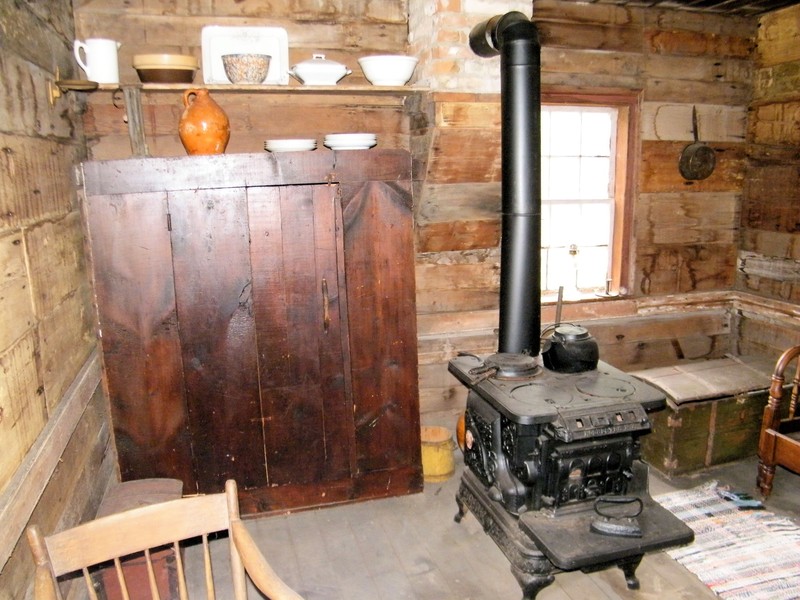
Marilyn Canfield, long-time local historian, shows Colonel Heg's dress sword to Nick and Mike.
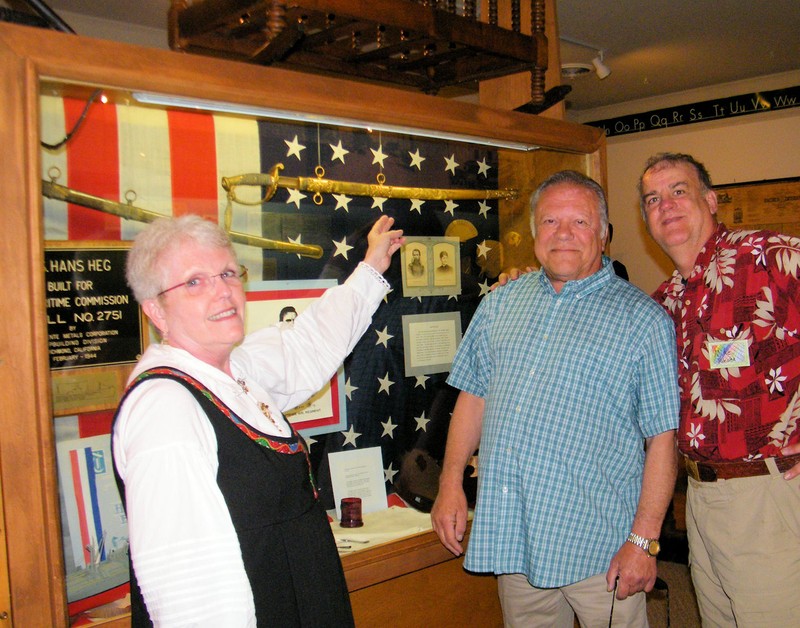
The Haugean minister Elling Eielison's parsonage was moved from Jefferson Prairie to Heg Park in the 1930s.
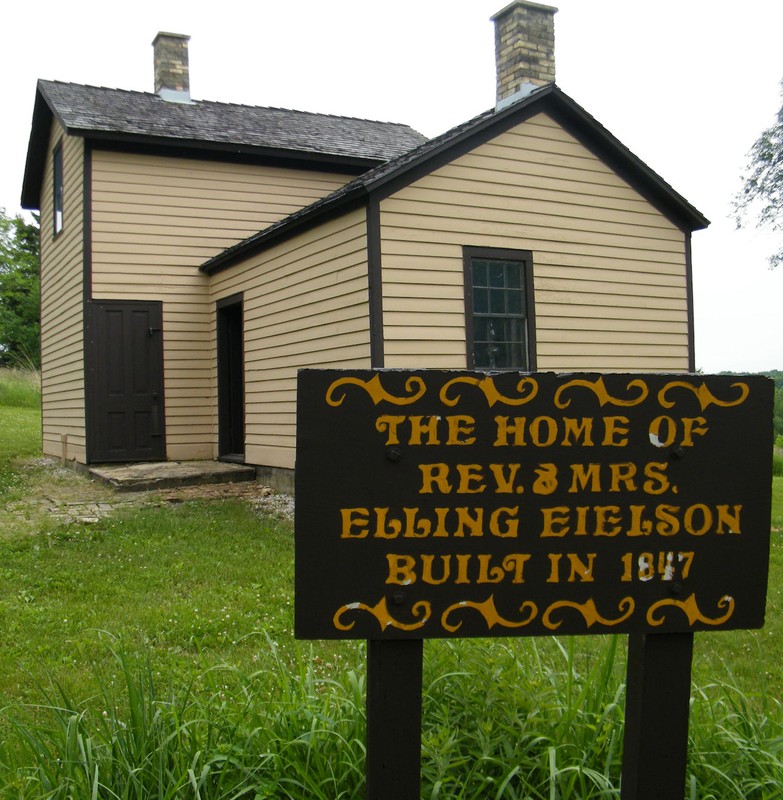
The bright, whitewashed interior of Eielson's three-room parsonage.
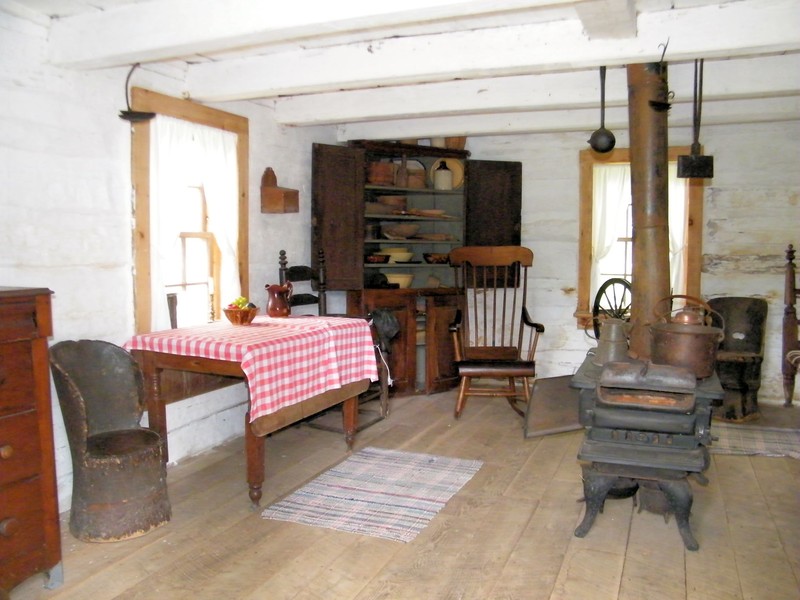
Backstory and Context
Text-to-speech Audio
Racine County’s Heg Memorial Park is across the street from the old Norway Lutheran Church. The Norway (Wisconsin) Historical Society operates a museum on the grounds. If you are looking for remnants of Norwegian-American pioneer settlement, this is a good place to visit.
One temperature-controlled building holds Old Muskego pioneer artifacts, Norwegian-American cultural displays and photos of Norway’s then-Prince Olav V and Princess Martha’s 1939 visit to honor the 100th anniversary of the Old Muskego settlement. The museum has artifacts from Colonel Hans Heg including his military dress sword.
Eliphalet Cramer’s 1837 Yankee log cabin is preserved as an excellent example of early settlement life. It was rebuilt in 1866 in the Norwegian style with a loft above the main living area. It was used as a home until the 1920s. The log cabin illustrates the way early settlers lived and what they used for household goods.
An outbuilding holds a large collection of antique farm equipment and tools, a mainstay of a good pioneer history museum, since farm implements were vital tools in the progress of rural Wisconsin settlers. You can get up close to the tools; they are not behind glass.
The parsonage of Elling Eielson is also on the park grounds. Here the first Haugean minister in America and his family lived. The parsonage was moved to the park from Jefferson Prairie.
Cite This Entry
Palecek, Mike. "Heg park museum." Clio: Your Guide to History. July 18, 2024. Accessed April 26, 2025. https://theclio.com/tour/2699/7/reverse
Sources
Bergan, Nels. History of Col Heg Memorial Park, with Nels Bergan : and German and Irish immigration to Racine, with Sister Mary Hortense, Dominican Sisters.
Palecek, Mike. The first Norwegian settlements in America : excerpted from The first chapter of Norwegian immigration (1821-1840) : its causes and results by Rasmus Anderson, 1895 (Racine WI, 2019), page 176-182
Palecek, Mike
Palecek, Mike
Palecek, Mike
Palecek, Mike
Palecek, Mike
Palecek, Mike

